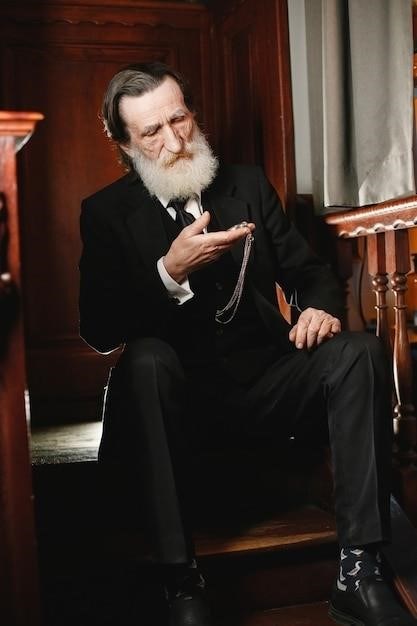The Gentleman’s Guide to Vice and Virtue⁚ A Review
Mackenzi Lee’s “The Gentleman’s Guide to Vice and Virtue” is a captivating historical fiction novel that follows the adventures of Lord Henry “Monty” Montague, a young bisexual British lord, as he embarks on a Grand Tour of Europe with his best friend and secret crush, Percy.
Introduction
Mackenzi Lee’s “The Gentleman’s Guide to Vice and Virtue” is a historical fiction novel that transports readers to 18th-century Europe, a time of societal upheaval and evolving societal norms. The novel, a vibrant tapestry of adventure, romance, and self-discovery, centers around the journey of Lord Henry “Monty” Montague, a young, rebellious, and openly bisexual nobleman, as he embarks on a grand tour of the continent with his best friend, Percy. The novel’s introduction sets the stage for a captivating narrative that explores themes of sexuality, identity, friendship, love, and the complexities of class and society. It’s a story that celebrates the power of individual expression, challenges societal expectations, and ultimately, embraces the inherent beauty of embracing one’s true self.
Plot Summary
The story unfolds as Henry “Monty” Montague, a young Viscount, prepares for his Grand Tour of Europe, a traditional rite of passage for young gentlemen of his class. However, Monty’s journey is far from conventional. He is a free spirit, unafraid to indulge in his desires, both for pleasure and for Percy, his best friend, and the object of his affections. Their adventure takes them from the bustling streets of Paris to the romantic canals of Venice, and everywhere they go, Monty’s recklessness creates chaos, leading to a series of mishaps and adventures that test their friendship and force them to confront their feelings for each other. Their Grand Tour turns into a thrilling manhunt as they are pursued by an enigmatic figure who holds a secret that could shatter Monty’s world. Throughout their journey, Monty and Percy navigate the complexities of their relationship, grappling with societal expectations and their own inner turmoil. The plot culminates in a dramatic showdown that forces them to choose between their desires and their safety, ultimately leading to a powerful revelation of their true selves.
Characters
The novel revolves around a vibrant cast of characters, each with their own unique quirks and motivations. Henry “Monty” Montague, the protagonist, is a charming and impulsive young lord who embraces life’s pleasures with an unyielding zest. He is struggling with his identity, grappling with his attraction to both men and women, and wrestling with societal expectations that clash with his desires. Percy, Monty’s best friend, is a reserved and intelligent young man who serves as Monty’s moral compass. Beneath his composed exterior, Percy harbors his own secrets and struggles with his feelings for Monty. Felicity Montague, Monty’s younger sister, is a sharp-witted and independent young woman who challenges traditional gender roles. She is a loyal and protective sibling who stands by Monty throughout his trials and tribulations. The supporting cast features a colorful array of characters, including Monty’s disapproving father, a mysterious and alluring Italian countess, and a witty and resourceful French tutor. Each character contributes to the richness and depth of the story, creating a compelling and unforgettable tapestry of personalities.
Henry “Monty” Montague
Henry “Monty” Montague, the protagonist of “The Gentleman’s Guide to Vice and Virtue,” is a complex and endearing character. He is a young lord who is born and bred to be a gentleman, but he is never one to be tamed. He is described as a “licentious, flawed and engaging 18th-century hero,” with a penchant for gambling, late nights, and fleeting relationships. Monty is struggling to reconcile his innate desire for freedom and pleasure with the expectations placed upon him by his family and society. He is also grappling with his bisexuality, trying to understand his feelings for both men and women. Monty’s journey of self-discovery is one of the central themes of the novel, and his struggles with identity and societal pressures resonate with many readers. He is a flawed but ultimately likable character, and his journey of self-acceptance is both entertaining and deeply moving.
Percy
Percy is Monty’s best friend and confidante, and the object of Monty’s secret affection. He is described as a charming and witty young man with a strong moral compass, though he is not without his own flaws. Percy is a foil to Monty’s impulsiveness and recklessness, offering a voice of reason and stability. He is also a source of great comfort and support for Monty, particularly when he is struggling with his feelings for him. Percy’s unwavering loyalty and understanding make him an ideal friend, but his own struggles with societal expectations and his own sexuality add complexity to his character. Percy’s relationship with Monty is the heart of the novel, and their journey of self-discovery and love is both heartwarming and thought-provoking. The tension and anticipation surrounding their relationship keeps readers engaged and rooting for them to overcome their challenges.
Felicity Montague
Felicity Montague, Monty’s younger sister, is a spirited and independent character who defies the expectations of her time. Unlike her brother, she is not bound by the constraints of societal norms and embraces her own individuality. Felicity’s sharp wit and rebellious spirit make her a delightful and engaging character. She is fiercely loyal to her brother and acts as his confidante, offering him support and encouragement. Felicity’s presence adds a layer of humor and lightheartedness to the novel, as she navigates the complexities of her own life and relationships. Her journey of self-discovery and her determination to forge her own path make her a relatable and inspiring character for young readers. Felicity’s role in the novel is not just about being a supporting character; she is a powerful force in her own right, challenging societal expectations and carving her own unique path.

Themes
The Gentleman’s Guide to Vice and Virtue explores a multitude of themes that resonate with contemporary readers. The novel tackles complex issues such as sexuality and identity, friendship and love, class and society, and the concept of the Grand Tour. Through the characters’ experiences, Lee sheds light on the societal constraints and expectations of the 18th century, particularly regarding gender roles and sexual orientation. The novel’s exploration of the complexities of love and friendship challenges traditional notions of romance, showcasing the fluidity and depth of human connection. Additionally, the novel delves into the societal hierarchies and power dynamics prevalent in the 18th century, highlighting the privileges and limitations associated with class and status. By presenting these themes through a compelling narrative, Lee encourages readers to question societal norms and embrace individuality.
Sexuality and Identity
One of the central themes explored in “The Gentleman’s Guide to Vice and Virtue” is the complex interplay between sexuality and identity. Monty’s journey of self-discovery is intricately intertwined with his exploration of his own desires and feelings. The novel challenges societal norms of the 18th century, where homosexuality was largely taboo and seen as a deviation from the expected societal roles. Monty grapples with his attraction to both women and men, navigating a world that often condemns or misinterprets his true nature. His experiences highlight the struggle for acceptance and self-expression, particularly in a time when societal pressures and expectations can be stifling. Through Monty’s journey, Lee underscores the importance of embracing one’s authentic self, regardless of societal constraints or prejudices.

Friendship and Love
At the heart of “The Gentleman’s Guide to Vice and Virtue” lies a compelling exploration of the intricate bond between friendship and love. The novel delves into the complicated relationship between Monty and Percy, two young men navigating the complexities of their feelings for each other amidst the backdrop of the Grand Tour. Their journey highlights the blurring lines between platonic affection and romantic desire, as their friendship deepens into something more profound. Lee masterfully portrays the emotional nuances of their connection, showcasing the vulnerability, tenderness, and unspoken desires that often accompany a deep-seated bond. Through their experiences, the novel explores themes of self-discovery, acceptance, and the transformative power of love, regardless of its form.
Class and Society
“The Gentleman’s Guide to Vice and Virtue” offers a nuanced exploration of class and societal expectations in 18th-century England. The novel highlights the rigid social hierarchy of the time, where birthright and lineage dictated one’s place in society. Monty, as a member of the aristocracy, is expected to uphold the traditions and responsibilities of his class, including inheriting the family estate and marrying a suitable woman. However, Monty chafes against these expectations, yearning for a life beyond societal constraints. Through his rebellious spirit and pursuit of pleasure, he challenges the norms of his class and grapples with the consequences of his actions. Lee’s depiction of class distinctions sheds light on the pressures and privileges associated with different social strata, demonstrating the ways in which societal expectations can shape individual choices and destinies.
The Grand Tour
The Grand Tour, a traditional rite of passage for young men of privilege in the 18th century, serves as the backdrop for Monty’s journey of self-discovery in “The Gentleman’s Guide to Vice and Virtue.” This European escapade provides a setting for Monty to break free from societal expectations and explore his desires, both romantic and otherwise. The Grand Tour is depicted as a time of adventure, indulgence, and cultural immersion, where young men are exposed to new ideas, experiences, and people. However, Lee’s portrayal also highlights the darker side of this tradition, including the potential for exploitation and the dangers of unchecked privilege. The Grand Tour becomes a catalyst for Monty’s personal growth, forcing him to confront his own prejudices and navigate the complexities of love, identity, and responsibility in a world where class and social status play a significant role.
Writing Style
Mackenzi Lee’s writing style in “The Gentleman’s Guide to Vice and Virtue” is characterized by its wit, energy, and playful tone. She seamlessly blends historical detail with contemporary sensibilities, creating a narrative that is both engaging and thought-provoking. Lee’s prose is lively and descriptive, capturing the vibrant atmosphere of 18th-century Europe and the diverse characters that inhabit it. Her dialogue is sharp and witty, reflecting the era’s social conventions and the characters’ personalities. The narrative voice is engaging and often humorous, with a touch of self-awareness that adds to the novel’s charm. Lee’s writing style effectively balances historical accuracy with modern themes, resulting in a story that is both entertaining and relevant to contemporary readers.
Reception and Awards
“The Gentleman’s Guide to Vice and Virtue” has garnered widespread critical acclaim and numerous awards. It was a New York Times bestseller and an ABA Indie Bookstore Bestseller, earning five starred reviews and receiving a 2018 Stonewall Book Award Honor and a New England Book Award. It was also named one of the top ten best fiction books for young adults of 2018 by YALSA and awarded a Seal of Excellence by RT Book Reviews. The novel’s popularity extended beyond the literary world, with NPR and the New York Public Library naming it one of the best books of 2017. “The Gentleman’s Guide to Vice and Virtue” has also been praised for its diverse representation, particularly for its LGBTQ+ characters and its exploration of themes such as sexuality, race, disability, and class.
Sequel
The success of “The Gentleman’s Guide to Vice and Virtue” led to the eagerly anticipated sequel, “The Lady’s Guide to Petticoats and Piracy,” which was released in 2019. This follow-up continues the story of the Montague siblings, focusing on Monty’s younger sister, Felicity, as she embarks on her own adventure. Felicity, a spirited and rebellious young woman, finds herself drawn into a world of intrigue and danger as she sets out on a quest to find her missing brother. With a blend of historical fiction and adventure, “The Lady’s Guide to Petticoats and Piracy” explores themes of female empowerment, family bonds, and self-discovery. While the sequel shifts the narrative focus from Monty to Felicity, it still retains the witty and captivating style that made “The Gentleman’s Guide to Vice and Virtue” such a success.
In conclusion, “The Gentleman’s Guide to Vice and Virtue” stands as a delightful and engaging historical fiction novel that transcends its genre. It offers a captivating blend of romance, adventure, and social commentary, all wrapped in a witty and charming narrative. Lee’s masterful storytelling and vivid character development create a world that is both familiar and fantastical, leaving readers wanting more. The novel’s exploration of themes such as sexuality, identity, and class resonates with modern audiences, making it a relevant and timeless read. Whether you’re looking for a heartwarming love story, a thrilling adventure, or a thought-provoking exploration of social issues, “The Gentleman’s Guide to Vice and Virtue” is a must-read for anyone seeking a richly rewarding and entertaining literary experience.
